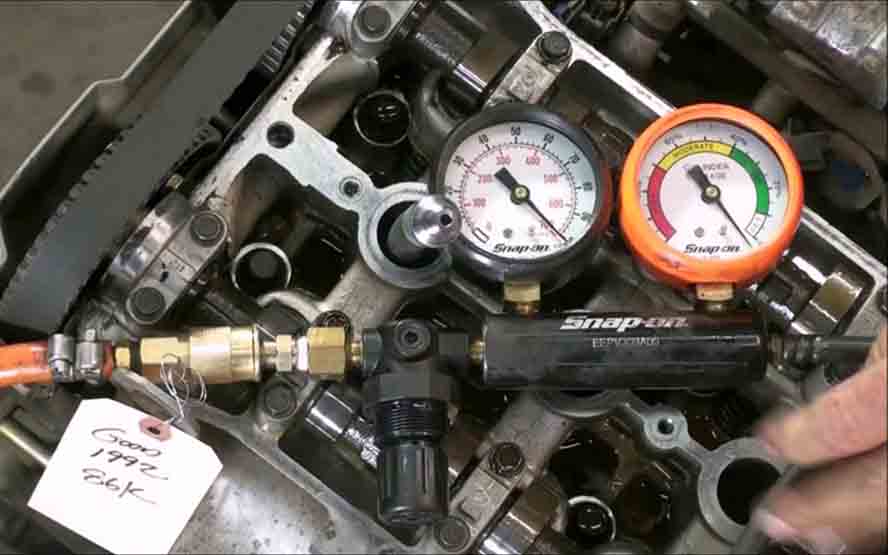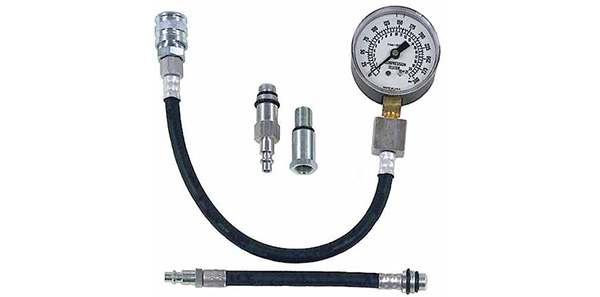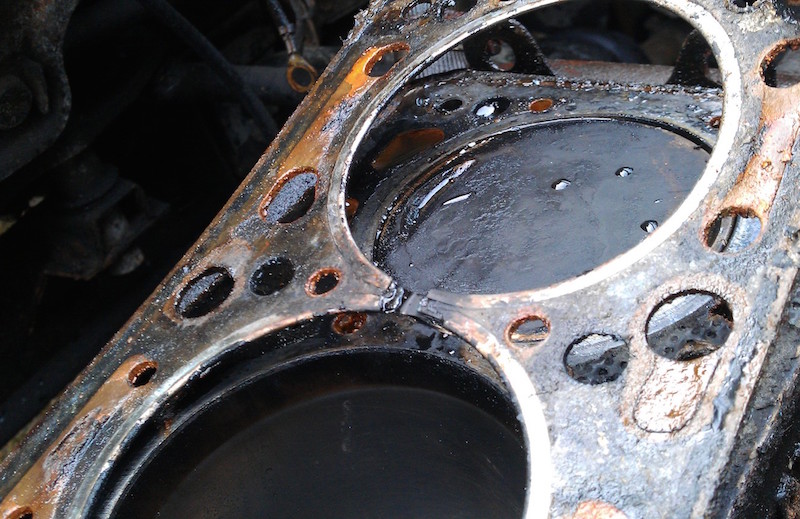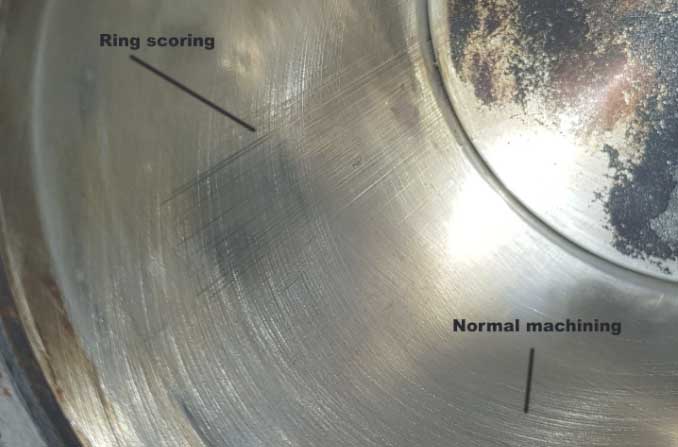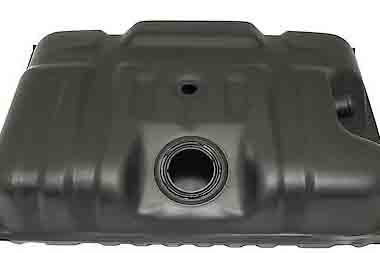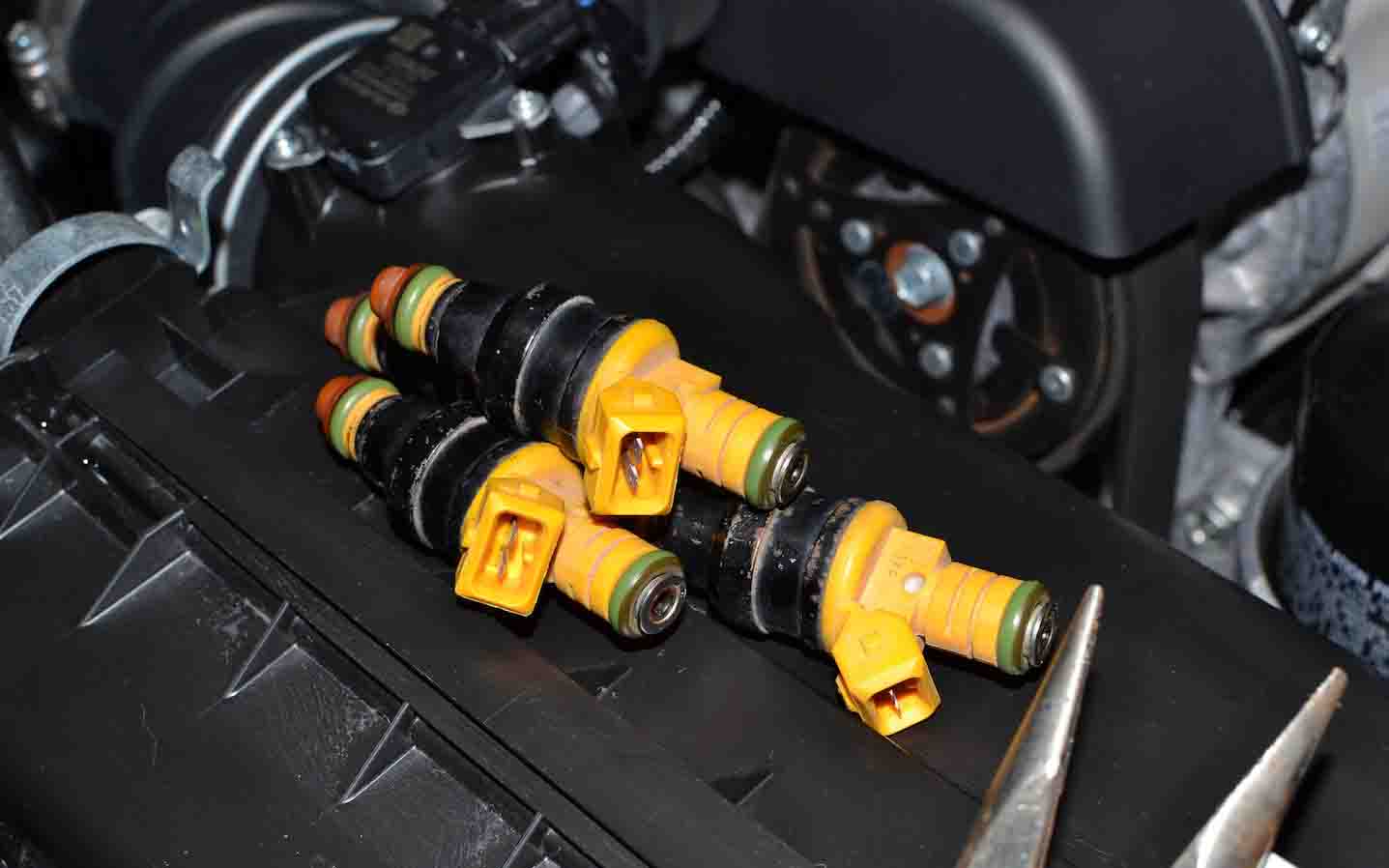There are two types of compression tests for engines. The regular engine compression test uses a single gauge and measures the maximum instantaneous compression built by that cylinder. A compression test uses the engine turning to generate the compression in the cylinder for the compression stroke, in which both intake and exhaust valves are closed. A leak down test uses a set of gauges and pressurizes the cylinder with air and measures how much of that air is escaping.
What is an engine compression test?
When the piston comes back up after the intake cycle, the air-fuel mixture is compressed into the combustion chamber. This compression is measured in pounds per square inch (PSI). Different manufacturers have different compression specifications. A compression test can tell you that your engine isn't developing sufficient compression, which causes a loss in power and in extreme cases can keep the engine from running. Except in rare instances, however, a compression test isn't going to tell you where that compression is being lost.
What is a leak down test?
Leak down is the percentage of compression that is lost by the engine, and every engine has some. Like a compression test, a leak down test is accomplished by replacing a spark plug with the tester hose. Unlike a compression test, a leak down tester has two gauges and requires a compressed air source. One of the gauges on the tester shows the pressure at which the cylinder is being pressurized. The other shows the percentage of the pressure that is being lost through leakage. That percentage tells you the condition of the cylinder. As with a compression test, leak down variance should be minimal.
This is a good project for new DIYers
-
Put manual transmissions in gear and firmly set the parking brake to keep the compressed air from turning the engine. Remove the dipstick and oil filler cap (remember, you will be introducing pressure to the engine internally). Remove the air cleaner housing or open the air-filter box. Crack the throttle open a tad. Open the radiator cap and overflow bottle.
-
Remove the plug boot from the No. 1 spark plug. Use the spark plug socket and ratchet to remove the No. 1 plug.
-
Insert a large screwdriver or long, thin dowel into the plug opening and turn the crankshaft clockwise with a socket and ratchet until the rod or screwdriver rises to the top and just before it begins to go down. This is the uppermost part of the exhaust or compression stroke and is called Top Dead Center (TDC).
-
After making sure the gasket/seal is on the leak down tester fitting, thread the tester hose fitting into the spark plug hole and make sure it's tight.
-
Turn the knob on the regulator counterclockwise to zero the inlet pressure and connect the air source.
-
Pressurize the cylinder by turning the knob clockwise.
-
Listen at the dipstick tube, oil filler cap, throttle body, airbox, exhaust pipe, etc. Check the radiator and overflow or supply bottle for bubbles. A mechanic's stethoscope or vacuum tubing makes hearing the hissing/bubbling indicating leak down much easier.
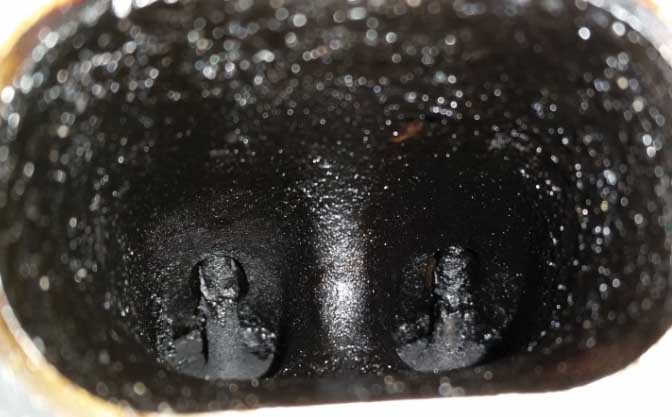
Hissing in the intake was heard during this leak down test. Leakage was caused by excessive carbon buildup. Source | Mike Aguilar
-
Write down the leak down percentage after a minute or two.
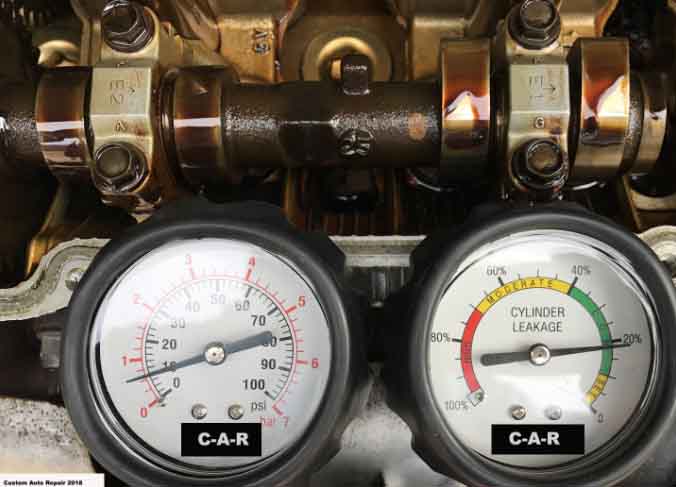
Hissing was heard in both the intake and exhaust as soon as the air inlet was opened. The exhaust valve was burnt and the intake had excessive carbon buildup. Source | Mike Aguilar
-
Close the air inlet and remove the air supply. Remove the tester hose and move to the next cylinder to be tested.
-
The plugs and wires can be replaced once all the cylinders have been tested. Replace the dipstick, oil filler and radiator caps, and the air cleaner housing or airbox.
The compression test says that cylinder No. 4 in your Camry only develops 40 PSI. That's good to know, but what's better to know is where that compression is being lost. Is it valves? Is it the block? Maybe it's the rings or head gasket? A leak down test will tell you where you're losing your compression.
Blown head gaskets will present as either air bubbles in the coolant or a hissing sound.
The sound of air hissing out of the oil filler, dipstick tube, or PCV valve indicates worn piston rings, a situation informally known as "blowby."
The sound of air hissing in the exhaust or out the tailpipe tells you the exhaust valve is leaking. A leaky exhaust valve can be due to carbon buildup, a worn valve guide or a valve that's seating poorly and letting hot exhaust gases past a point where the valve "burns" and erodes at its edge. In extreme cases, a burned valve can lead to backfiring and a rough idle.
Leaking intake valves show up as air hissing in the intake.
Minimal leakage coupled with low compression in all cylinders is usually symbolic of a timing chain or belt that has slipped a tooth or two.
Scoring on cylinder walls will cause excessive leak down. Source | Mike Aguilar
The variety of available loaner tools varies by store. Check with store associates for what they have available.
Your air source can either be an air compressor or a portable air tank that can be filled at a gas station or service center.
Advance Auto Parts stocks a TDC Indicator tool that helps take the guesswork out of this.
Cylinders 1 and 4 will be at TDC at the same time, as will 2 and 3 in four cylinder engines.
